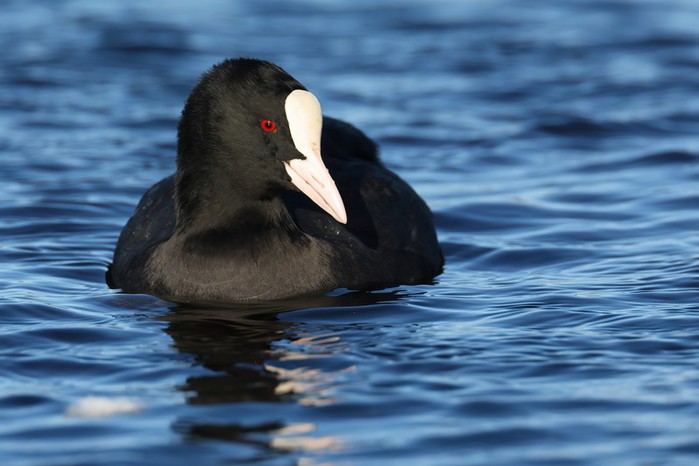Larger Shields, No Gains: The Strange Tale of the Urban Coot
Coots in Polish cities show visible changes in ornament size, yet their reproductive fortunes remain unchanged - challenging assumptions about adaptation.

A new study by Polish researchers reveals that Eurasian Coots living in cities exhibit a marked increase in the size of their frontal shields - the fleshy, unpigmented plate on their foreheads that serves as a visual signal in social interactions. This finding contrasts with the widely observed phenomenon of ‘urban dullness’, where ornamental features often diminish in urbanised birds. The enhanced shield size in urban coots appears to be linked to improved physiological condition, likely fuelled by rich anthropogenic food supplies such as bread and other human leftovers.
Conducted across eight populations - four urban and four nonurban - and supplemented by long-term monitoring in Lódz, the study found consistent evidence that coots in cities had larger frontal shields than their rural peers. This ornamentation was also associated with higher haemoglobin levels, suggesting a condition-dependent expression.
Bold birds, bolder choicesCoots with larger shields were more likely to nest in exposed urban locations - closer to shorelines and open water - where human disturbance is high but food availability is greater. These individuals appeared to favour riskier but resource-rich environments. The researchers suggest this may reflect greater boldness and exploratory behaviour among more ornamented birds.
However, there was no corresponding increase in aggressive nest defence or reproductive success, suggesting that the shield may signal a specific behavioural profile rather than overall dominance or fitness.
Urban food fuels ornamentationUnlike carotenoid-based features, which depend on high-quality natural food, the fleshy frontal shield may benefit from the sheer caloric intake available in urban environments. The study’s authors suggest that access to energy-rich, albeit nutrient-poor, anthropogenic food allows urban coots to sustain the physiological costs of maintaining larger ornaments.
Interestingly, while testosterone levels are known to influence frontal shield development in related species, the coots’ enlarged shields in cities did not correlate with higher stress markers. This may indicate that urban individuals are either physiologically resilient or reaping sufficient energetic benefits to offset the hormonal costs.
Ornament without advantage?Despite their larger shields and better body condition, urban coots did not show higher breeding success. The researchers attribute this disconnect to the unpredictable pressures of urban life - from fluctuating water levels to recreational disturbance and invasive predators like domestic dogs.
Previous studies have similarly found that while individual quality traits (including genetic indicators like MHC diversity) may correlate with certain aspects of health and behaviour, they do not always translate into improved reproductive outcomes in urban contexts.
Signals in the cityThis is the first study to show that urbanisation can enhance a non-plumage, unpigmented ornament in birds. While much urban ecology has focused on reduced vibrancy in feathers, the coot’s frontal shield presents a contrasting case - one where visual signalling is magnified in human-altered landscapes.
Whether this enlarged ornament confers any selective advantage remains unclear. But the findings underscore the complexity of urban adaptation and the need to examine multiple types of ornamentation across diverse species. Urban coots, it seems, are adapting boldly - even if not always beneficially - to life among us.
May 2025
Share this story







